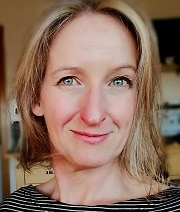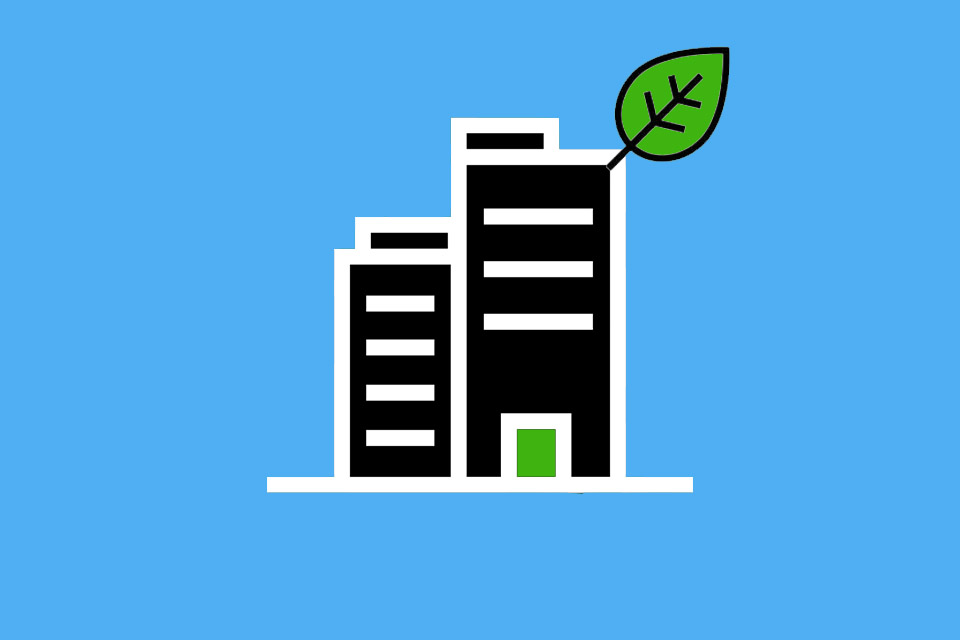Sustainability and open source
Table of Contents
From the specific to the general term
The blind spot in the sustainability discourse
Social sustainability
Digital sustainability – ecological perspective
Digital sustainability – social perspective
Open source – free, but not necessarily without cost
Digital sovereignty promotes digital sustainability
Digital dependency vs open source
Open source for all?
The idea is actually quite simple: if you only cut as much wood as grows back within a natural regeneration cycle, you can use wood for a very long time, profit from it regularly and maintain its value in the long term.
The idea of the 18th century forestry expert Carl von Carlowitz was a purely economic decision based on a simple insight: If the forest is completely cut down, I reduce the forest to its pure current use value. The capital is perdu for the next 30 years, brings no more income for the company and, from a social point of view, no more jobs. An entire region is being bled dry.
Apart from that, a forest is a habitat and offers much more than just the selling price of the wood: recreation, protection, shade, food, you name it. Carlo von Carlowitz found a name for his idea in his Sylvicultura oeconomica (1713): sustainability.
From the specific to the general term
For a long time, the term was limited to forestry. It was only rediscovered in the 1980s with the rise of the so-called eco-movement and in the context of the publication “Our Common Future” (1987, “Brundtland Report”) of the World Commission on Environment and Development (WCED). Since then, it has been used as a cross-cutting term:
“Sustainable development is development that meets the needs of the present without compromising the ability of future generations to meet their own needs.”¹
As a result of the Brundtland Report, the UN Conference on Environment and Development was held in Rio de Janeiro in 1992, where representatives from 178 countries met to discuss environment and development issues in the 21st century.
“In Rio, the concept of sustainable development was recognised as an international guiding principle. Behind this was the recognition that economic efficiency, social justice and the safeguarding of the natural basis of life are interests that are equally important for survival and that complement each other.”²
The outcome of the conference was Agenda 21 – a programme of action that called for new development and environmental partnerships between industrialised and developing countries. In it, the participating states committed themselves to developing national sustainability strategies. Germany first presented a strategy paper with “Perspectives for Germany” (2002), which was supplemented with a programme of measures in 2010.
This was followed in 2015 by the 2030 Agenda for Sustainable Development, which was unanimously adopted by the member states of the United Nations. The 2030 Agenda contains 17 goals (Sustainable Development Goals, SDGs) for socially, economically and ecologically sustainable development. The 17 goals are considered universal and apply equally to all countries.
The blind spot in the sustainability discourse
Although the term sustainability has not been limited exclusively to ecology since the Brundtland Report, it is still often the case that it is mainly associated with ecological sustainability: If you want to save the forest, plant trees. If you want to save the climate, plant trees.
In the scientific debate, various sustainability models developed with the areas of economy, ecology and social issues, but the area of ecology (ecological sustainability) is by far the most detailed. In the business context, these models were adapted and transferred to the so-called voluntary “Corporate Social Responsibility” (CSR) or also “Corporate Responsibility” (CR). Here, too, measures in the area of ecology, such as the purchase of electricity from renewable energy sources, energy-saving measures, waste reduction measures, etc., still dominate today. More recent in the CSR context is “corporate citizenship”, i.e. companies see themselves as embedded in society and thus also as citizens.
Social sustainability
In the corporate context, “social” usually refers to measures on issues such as occupational health and safety and working time regulations (both legislated) or fair pay, inclusion and diversity. Those who want to show responsibility beyond the legal requirements include company (possibly participatory) health management and training and development.
Little known so far is that the
- development of democratic organisational structures,
- wide-ranging co-determination offers (participatory offers),
- a moderating leadership culture,
- transparency and
- error-friendliness
may also be counted under the term social sustainability, because they contribute to improving aspects such as
- health,
- self-determination,
- dignity,
- development,
- equal opportunities and
- education.
Digital sustainability – ecological perspective
With increasing digitalisation, it is of course necessary to also integrate this topic – as broadly as one can think of it – into the consideration of sustainability. On the one hand, digital sustainability can be viewed from an ecological perspective. This means, among other things, that hardware is examined under environmental aspects:
- What material is the hardware made of?
- How much material and energy was used in its production?
- How much energy is consumed during operation?
- Can the hardware be recycled?
- Can the CO2 emissions during operation be measured?
- How much particulate matter is produced by the wear and tear of operating the hardware?
- What is the lifespan and useful life? Is it wired or mobile?
Software can also be looked at from an environmental perspective:
- Is the code written in a way that encourages rather than reduces energy-intensive interactions with other software?
- How much data rubbish, which increases energy consumption, does the code generate?
- Has the software been developed in a resource-efficient way?
And last but not least, internet use is part of the environmental sustainability consideration:
- How much energy does live streaming or online conferencing consume?
- How much CO2 is produced by search queries?
Open source – free, but not necessarily without cost
First, a few brief remarks on the term open source. It is usually used synonymously with open source software. That is, software whose code is openly accessible to all and may be changed. Unfortunately, some people assume that open source software is synonymous with “free” because there are funny developers who have nothing better to do than code in their spare time and earn their bread and butter at some IT company. There are those developers who code just for fun and for free and are passionately involved in open source projects.
However, there are also a large number of commercial enterprises working in the open source business sector and developing very professional open source software in order to offer commercial alternatives to widespread proprietary and/or monopolistic software for companies and institutions. This means that it makes sense or is legitimate to earn money with open source – i.e. to work with the system in order to change it from within. An example of this is the Open Source Business Alliance, the Bundesverband für digitale Souveränität e.V. (Federal Association for Digital Sovereignty), which, on behalf of its 170 member companies, advocates “establishing open source as the standard in public procurement and in research and business promotion. In addition, there are various associations and institutions that have been promoting the idea of open source in the non-profit sector for a long time.
Digital sovereignty promotes digital sustainability
On the one hand, digital sovereignty is understood as the basic skills needed to act safely in a digitalised world and to be able to assess the effects of one’s own digital behaviour. Sovereignty goes hand in hand with equality of opportunity, which requires (barrier-)free access to knowledge and the corresponding infrastructure. On the other hand, digital sovereignty concerns the sovereignty over one’s own data and the handling of it. Only if I have sovereignty over my own data can I act in a self-determined manner. If my data belongs to me, no one can misuse it, i.e. my dignity, my personality and my health are protected and make me less vulnerable. However, this is exactly the crux of the matter: within our digitalised world, we are currently in a highly unhealthy dependency on a few corporations that prevent this sovereignty – regardless of whether we are private individuals or companies. Such one-sided dependence creates a power imbalance and can never be sustainable.
Digital dependency vs. open source
For several years, research has been conducted on the connection between open source and sustainability. In the Open Source Yearbook 2008, a project of the TU Berlin published 5 years in a row (from 2004 to 2008), Thorsten Busch describes the connection between open source software and the concept of sustainability. The Digital Sustainability Research Centre at the University of Bern also integrates open source into its work. Dr Matthias Stürmer, the former head of the research centre, formulates the connection thus:
“Digital sustainability aims to maximise the societal benefit of digital goods and is defined by the fact that digital knowledge goods are produced in a resource-conserving manner, freely used, collaboratively developed and accessible in the long term. In other words, software is not digitally sustainable if there are legal or technical dependencies on a company or an individual. This restricts future generations in their freedom of action, which contradicts the basic definition of sustainability.”
Open source software is described here as a value that needs to be preserved in the long term in order to create development opportunities (and thus adaptations and improvements to changing conditions). From a global perspective, open source software therefore serves distributive justice, which is directly addressed in SDGS 10 and 16, but indirectly also in SDGS 1, 4 and 9. If people of the so-called global South have free access to source codes (and at the same time access to the corresponding knowledge), they are free to use them for their purposes and needs.
Other areas that urgently need to free themselves from digital dependencies in order to become digitally sustainable are the public sector, i.e. the federal, state and local governments, as well as the education system. Currently, the German public sector is not digitally sovereign at all, but is massively dependent on the US software provider Microsoft. This is problematic, because if the federal, state and local governments are digitally dependent, they cannot offer their citizens complete digital security. This dependence also raises the question of financing: Shouldn’t software used by the public sector and financed by taxes also be open source? The initiative Public Money? Public Code! is working to establish free software as the standard for publicly funded software. This German blog article describes the costs that arise when the public sector is digitally dependent.
Open source for all?
If one transfers the public sector problem to the economy, a similar dependency picture emerges. Microsoft has a global market share of 76.26%³. The situation in companies is similar: the most widespread operating system is Windows, and Microsoft Office solutions are used for operational business. Another dependency is SAP software, which is also widely used by companies. In the area of design and graphics, Adobe software dominates. And who can imagine a life without PDFs (Adobe Acrobat) in a professional context? Alternatives to MS Outlook?
Would open source be the solution to dependency? A clear yes. However, one must both leave one’s own comfort zone for this (learn to deal with new programmes) and weigh up the costs and benefits. The more the digital infrastructure of my company is entangled with proprietary products of the corporations, the more effort a complete exit will cause. You also have to consider the existing interfaces to third-party providers, customers and suppliers when making the switch. It is of little use if I create a digitally sovereign isolated solution if, for example, suppliers can no longer work with me because they work with incompatible programmes.
Nevertheless, it is always possible to start small and change over step by step, even if not everything is open source in the end. An entrepreneurially sensible strategy is a “both/and” approach, i.e. to make oneself digitally independent in principle, but to keep the connection to standard market software in order to remain able to act flexibly.
Sustainability is not a state, but a perpetual and cyclical process – economically, ecologically and socially.
[1] World Commission on Environment and Development 1987, P. 54
[2] Source: www.bmz.de
[3] Source: statista; Stand 2021
To deepen in German:
Digitale Nachhaltigkeit – Kay-Uwe Martens
Forschungstelle Digitale – Open Source Software
Faktenblatt Nachhaltigkeit und Digitalisierung
Wann sind Open Source Projekte digital nachhaltig?
Daniela Röcker has published more articles in the t2informatik Blog:

Daniela Röcker
Daniela Röcker accompanies companies in the context of digitalisation and sustainability as an organisational developer and consultant with the Kultur-Komplizen. Her goal is to create circumstances that enable employees, leaders and teams to implement changes on their own. One of the tools she uses is “culture profiling”, which she developed herself in 2019 and which is being iteratively developed further together with practice partners. The Kultur-Komplizen are involved in the core team of #EntrepreneursForFuture Region Stuttgart.



Digital sustainability – social perspective
When thinking about digital sustainability from a social perspective, the term “ethics” usually comes up first. Here, for example, questions arise such as.
With this third question, we approach the connection between open source and sustainability, because this is where the concept of digital sovereignty comes into play.